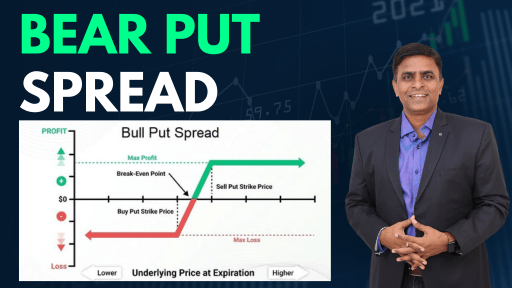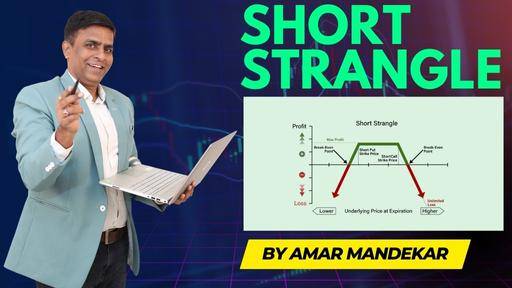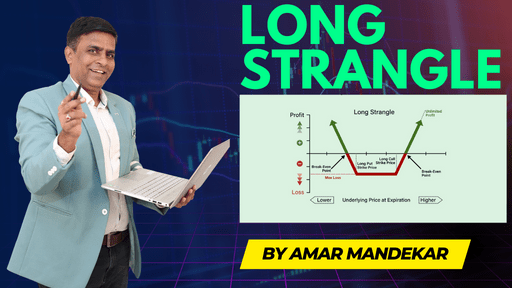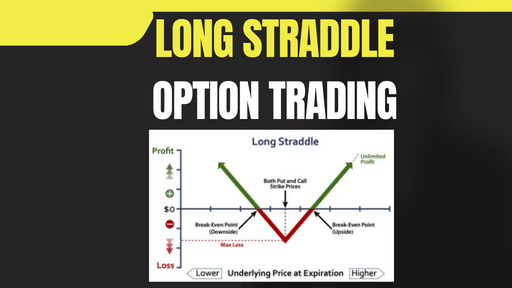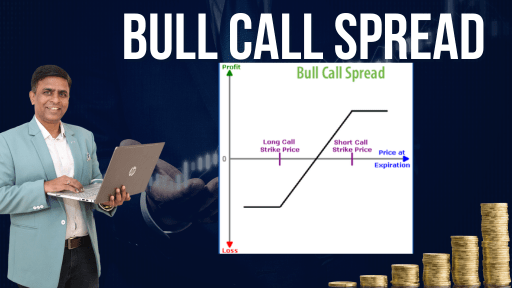Table of Contents
Introduction:
Welcome to the world of options trading. In the dynamic realm of stocks, knowing how to navigate bearish trends is crucial to safeguarding your investments. Fear not, for we have an ingenious solution in store for you – the Bear Put Spread!
In this guide, we’ll delve into the Bear Put Spread options trading strategy, equipped with a clear definition, a practical example, its application in real-life scenarios, and a thorough analysis of potential risks. By the end, you’ll have the tools to wield this strategy with confidence, enhancing your financial prowess and reaping rewards even during market downturns.

Bear Put Spread Keypointers
- Definition: A bear put spread is an options strategy used by investors expecting a moderate-to-large decline in a security’s price, aiming to reduce the cost of holding the option trade.
- Strategy: It involves buying put options with a higher strike price and simultaneously selling an equal number of puts with a lower strike price and the same expiration date.
- Profit Potential: The maximum profit is the difference between the two strike prices, minus the net cost of the options.
- Advantages: The strategy reduces net risk compared to simple short-selling and works well in modestly declining markets.
- Risk Limitation: Losses are limited to the net amount paid for the options, providing a defined risk-reward ratio.
- Main Advantage: Selling the lower strike put helps offset the cost of the higher strike put, resulting in a lower net outlay of capital.
- Main Disadvantage: The strategy limits profits to the difference between the strike prices, potentially missing out on larger gains if the underlying asset declines significantly.
- Ideal Play: Suitable when the trader expects a limited decline in the underlying asset’s price within a specific timeframe.
- Real-World Example: Using Levi Strauss & Co. stock, a bear put spread is demonstrated with potential profit and loss scenarios.
- Risks: Early assignment is possible, and options-holders have no control over fulfilling the obligation, exposing them to additional risks.
What is a Bear Put Spread?
let’s grasp the essence of the Bear Put Spread. Picture this: you anticipate a decline in a particular stock’s value, but you’re uncertain about how the market will precisely unfold. The Bear Put Spread lets you mitigate risk while seizing the opportunity for profit. It involves two put options – buying one put option and simultaneously selling another with a lower strike price.
Example: Unraveling the Bear Put Spread
Let’s embark on a real-life example to illustrate how the Bear Put Spread works its magic. Imagine you’re eyeing Company XYZ, a tech giant whose stock currently trades at $100 per share. You anticipate a potential decline in the near future due to emerging industry competitors. To employ the Bear Put Spread:
- Buy a put option contract with a strike price of $105, which gives you the right to sell the stock at $105.
- Simultaneously, sell another put option contract with a strike price of $95, granting someone else the right to sell the stock at $95.
How It’s Used: Navigating Bearish Waters
Now that we’ve seen the Bear Put Spread in action, let’s delve into its practical application. As the market takes a bearish turn and the stock price drops, your $105 put option acts as a safeguard, allowing you to sell the stock at the higher strike price even if it’s trading below that value. Meanwhile, the sold $95 put option provides you with some premium income that can offset potential losses if the stock falls further.
Risks Involved: Taming the Bear
No trading strategy is without its perils, and the Bear Put Spread is no exception. It’s crucial to understand the risks involved to make informed decisions. Here are some of the key risks:
- Limited Profit Potential: Due to the simultaneous buying and selling of put options, your profit potential is capped, especially if the stock experiences a significant decline.
- Breakeven Considerations: You need to consider the breakeven point, which is the stock price at which the strategy starts to become profitable.
- Time Sensitivity: As with most options strategies, time is a crucial factor. The longer you wait, the more the value of the options may deteriorate.
Difference Between Bull Put & Call Put
- Underlying Strategy:
- Bear Call Spread: Involves using call options to create a bearish position.
- Bear Put Spread: Involves using put options to establish a bearish position.
2. Payoff Structure:
- Bear Call Spread: Profits from a downward price movement of the underlying asset, capped at the difference between the two call strike prices.
- Bear Put Spread: Also profits from a downward price movement of the underlying asset, capped at the difference between the two put strike prices.
3. Option Type Used:
- Bear Call Spread: Uses call options, which give the holder the right to sell the underlying asset at a specific price (strike price) before the expiration date.
- Bear Put Spread: Uses put options, which give the holder the right to sell the underlying asset at a specific price (strike price) before the expiration date.
4. Market Sentiment:
- Bear Call Spread: Used when the investor expects a moderately bearish or neutral outlook on the underlying asset.
- Bear Put Spread: Employed when the investor anticipates a strongly bearish outlook on the underlying asset.
5. Risk and Reward Potential:
- Bear Call Spread: Limited risk and limited reward potential due to the capped profit and loss levels.
- Bear Put Spread: Limited risk and limited reward potential as well, but the potential profit can be higher compared to a bear call spread if the underlying asset’s price decreases significantly.
Bear Put Spread FAQs:
Q: Can the Bear Put Spread be used for any stock? A: Yes, you can employ this strategy for any stock you anticipate will experience a bearish trend.
Q: Is the Bear Put Spread suitable for beginners? A: While it may seem complex, with proper understanding and practice, even beginners can utilize this strategy effectively.
Q: What happens if the stock price remains unchanged? A: If the stock price stays at or near the strike prices, you may face losses due to the premium paid for the higher strike put option.
Wrap-up: Your Path to Confident Trading
In conclusion, the Bear Put Spread is a versatile and valuable options trading strategy, empowering you to navigate bearish markets with skill and confidence. Armed with the knowledge of how it works, its application, and associated risks, you can unleash the full potential of this strategy to protect your investments and seize opportunities during market downturns.
Remember, options trading involves inherent risks, and it’s essential to conduct thorough research, practice with virtual accounts, and consult with financial experts before engaging in live trades. Embrace the Bear Put Spread as a key weapon in your trading arsenal and stay proactive in learning and adapting to the ever-changing landscape of the stock market.
Now, venture forth with newfound wisdom and embark on your journey to becoming a seasoned options trader!
Disclaimer:
The information provided in this blog post is for educational and informational purposes only. It should not be construed as financial advice or a recommendation to buy or sell any securities. Always do your own research and consult with a qualified financial advisor before making investment decisions.
Also Read : Options Trading Strategies You Must Master to Boost Your Success
External Sources : Bear Put Spred







